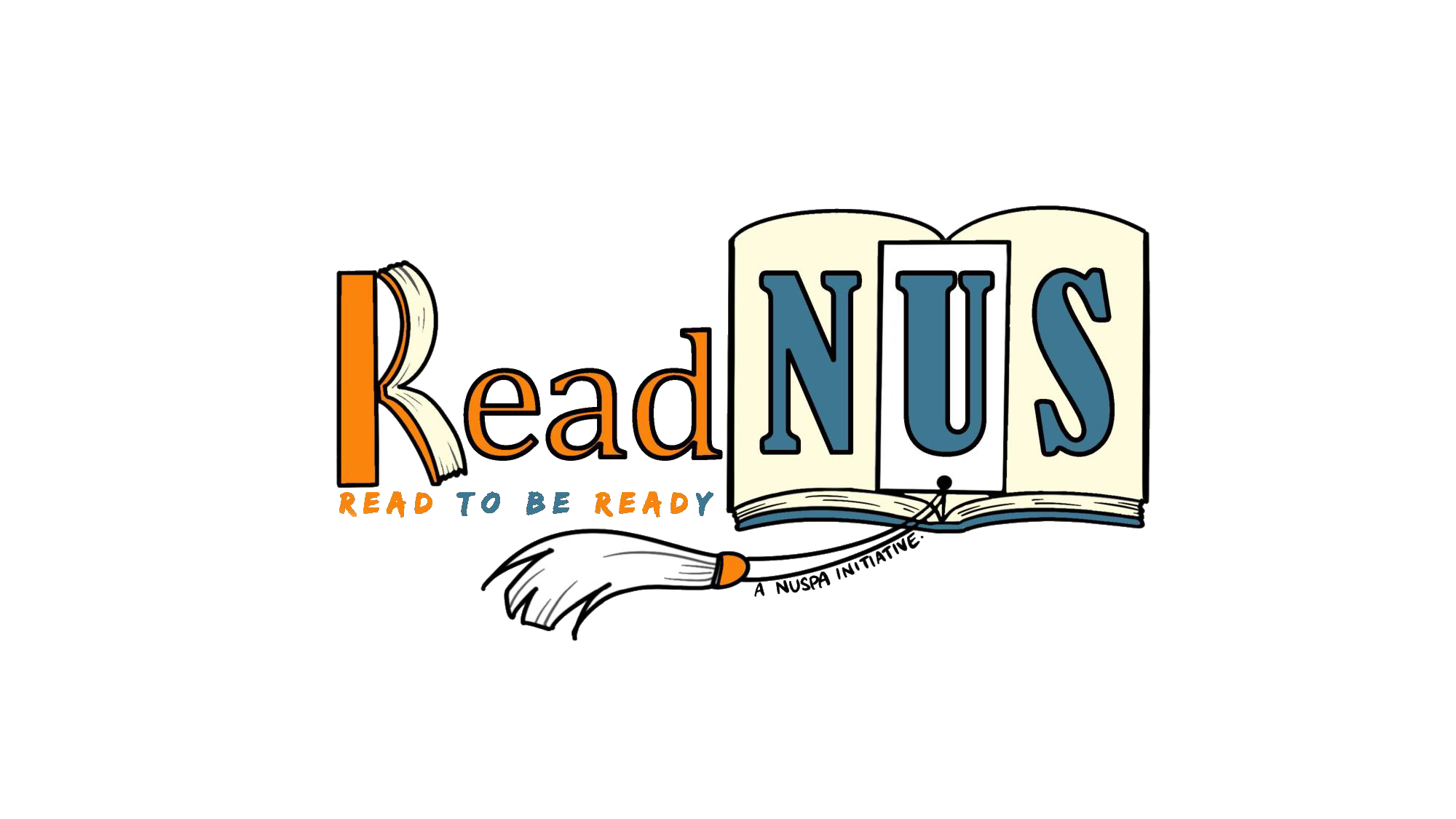A Homage to Dame Christie and her top 5 works
I shall never get over Agatha Christie’s works for as long as I live. Her books have left an indelible mark on my life; both on how fastidious one can be when it comes to the details of the deed, and on what excellent writing is like. And no matter the number of works I’ve successfully ploughed through, she never ceases to rear the mystery on its head to get me when I least expect it. Or maybe I’m simply not bright enough for her felonious powers.
Who is the Dame of Crime & Mystery?
Agatha Christie, also known as the queen of dashing mystery & espionage works, is fondly remembered as Dame Christie for her worldwide bestsellers that have become a mainstream staple in a crime foodie’s diet. Works like And Then There Were None, Murder on the Orient Express, and Death on the Nile, have time and again, been remade into films and mini TV series. Her detectives, Miss Marple and Hercule Poirot, have also taken the crime reading community by storm; they’re some of the biggest names out there.
Nonetheless, though these works are recognisable by name, not everyone seems to know the woman behind the work. When I tell people I love Agatha Christie’s works, they often draw a blank and only light up with recognition when I say, “Heard of the Murder on the Orient Express?” — which, in all fairness, isn’t even in my top 5 works by her.
The language barrier may be one factor that increases the inertia for getting into Christie’s works. While her English is not Anglo-Saxon or distant enough for us to assume that it’s Shakespearean, some of the language comes across as plain foreign. Personally, when I first picked up her novels at the ambitious age of nine, I badly struggled with the type of writing she delivered. I wasn’t quite so accustomed to 20th century writing, and was still trying to move from modern works to older ones. Since then, I’ve made an active effort to go through her novels again, and have, to my surprise, easily picked up on Dame Christie’s language and works. At this juncture, it has become a third language. The endgame for me is to also finish her entire bibliography by the time I have one foot in the grave. Last I checked, that peaks at around 89-91 books.
I would like for everyone to experience the same joys and woes as I do when I read Dame Christie’s works, so here are my top 5 recommendations for new fans. As for where to find them, it is a great privilege to share that I’ve received all of the following as gifts from my lovely friends, but I believe they are also easily loanable from the great, expansive shelves that is the National Library Board.
1. Crooked House
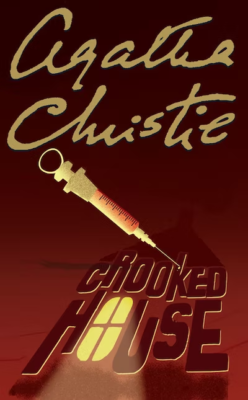
The ranking matters. Crooked House is undoubtedly my favourite work of all time, and I can’t fathom nor put into words my unbridled passion for this book. The premise is relatively simple: Narrator Charles Hayward is the detective to a case of poisoning in the Leonides’ household. The prime suspect is, surprise surprise, his fiance Sophia Leonides. In an effort to prove her innocence and crack the case, he investigates and finds that everyone in the house had a motive, opportunity, and no alibi. This makes it tricky. But as Hayward hurtles towards the horrifying conclusion, it seems that the case is more psychological than it is about hard facts.
The ending here actually gave me whiplash and absolute disbelief, and it works because Christie primes the reader to believe that the alleged murderer is unable to commit the crime, psychologically, and also because the narrator himself avails to think otherwise. It simply is impossible. Given that the book further ends in demise, it resonates as a poignant story of desperation and escape, rather than one of inevitability and fatalism.
2. The Murder of Roger Ackroyd (TMRA)
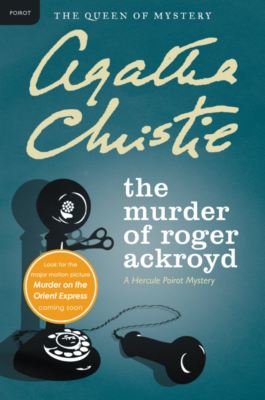
This book makes me squeal. There’s no way you’d see the ending coming. You pretty much get led on this wild goose chase of the whodunnit, and how-did-they-do-it, before being slapped in the face with the conclusion.
In TMRA (it’s too long), the typical case of the locked room is served to you on a platter. Roger Ackroyd is found stabbed to death with a dagger on his desk, and the window of time for the murder? 15 minutes. The only way in and out is through the window, but the suspects for the time seem implausible. Most importantly, what would be the motive? Themes of blackmail and anger prevail.
Throughout it all, the mystery is narrated by Dr. Sheppard, the doctor who found the body, and who works with Hercule Poirot to figure out who the real murderer is. How enticing! Merely talking about it is compelling enough for me to re-read it again for the third time. While Crooked House shook me up, this moved heavens and opened up the sky for me. It also relies on an eponymous, telltale writing trope that I can’t mention.
3. N or M?
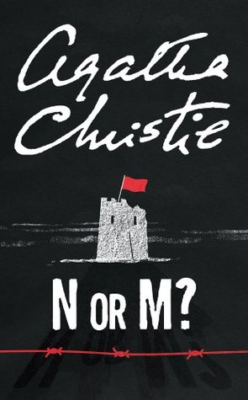
N or M? is set in the context of Tommy’s and Tuppences’ retirement, where they’ve been relegated to being sideline players after spending much of their time in gathering intelligence for the World War II British sector. “N” or “M” here, refers to two top Germany spys, of which they know neither the identity nor location. Outside of the novel, N or M is a reference to a misprint in the Book of Common Prayer, as nomen vel nomina (meaning, name or names). In this context, it alludes to the espionage-like nature of the mystery, and how Tommy & Tuppence crack their heads to figure out the names of Germany’s top spys.
The political and rouge-like nature of the novel suggests that it’s certainly not everyone’s cup of tea. I personally also thought that novels with overbearingly political overtones were not to my taste. Surprisingly — or perhaps it’s the Dame Christie effect — I enjoyed this to a great degree. Apart from its intriguing political premise, Tommy and Tuppence have one of the greatest dynamics in the history of crime-solving, myth-busting partners. They’re both wildly eclectic, and like Miss Marple, I hold a soft spot for older adult mystery-solvers. Plus they’re a couple! An absolute score.
It is exactly because they are so benign in appearance, that they’re the biggest underdogs of the novel. That provides a strong and satisfying resolution in itself.
4. Death on the Nile
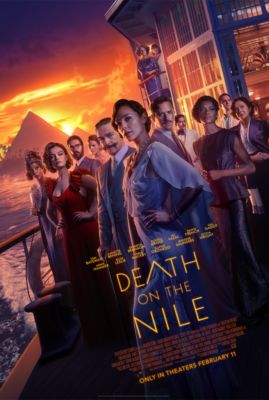
I am proud to say that this is the only Christie book which I’ve successfully guessed the ending to. Mainly because the murderers were somewhat in the periphery of the ‘guessing range.’
Recently fashioned into a film this year (2022), the book casts Linnet Ridgeway, a rich and beautiful socialite, as the victim and perpetrator to her death. Linnet, who steals her close friend Jacqueline’s husband away from her, is found shot in the head and dead during a cruise on the Nile. Naturally, suspicion falls on Jacqueline, who was just betrayed a few days earlier. And once more, by some earth-shattering coincidence, Poirot is part of the crew who puts the puzzle pieces together.
I’m not that big of a fan of this one since it took aeons to lead into Linnet’s death. It was context A, then context B, then context C, and the set-up ran to a point where I sort of lost the thread and could no longer pick it up. Well, not until Poirot was recalling the facts of the crime. Seeing that it also takes place on a ship, you have to familiarise yourselves with everyone onboard; like what TMRA or even The Murder on the Orient Express entails. That’s a lot of responsibility on the reader. But for that very reason, it makes the story gripping. All the more it was compelling because of how the crime was, spoiler alert, one of not just passion, but of careful tact and planning as well. Albeit shoddy, of course.
5. The Thirteen Problems
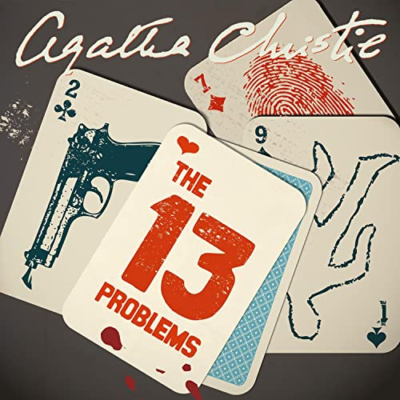
I feel that there is little to say about this book — and yet, I cannot help myself from falling in love with the beloved Miss Marple. Comprising 13 mystery stories, these shorts really pack a punch for how succinct each mystery is. Precisely, each of them falls under 30 or so pages. And they’re all shared by Miss Marple and others who are present at the table.
Here, there are two episodic arcs: The first six mysteries being divulged at The Tuesday Night Club, the next six at Sir Henry Clithering’s dinner party, and the last being a ‘live action’ mystery, one that Sir Henry invites Marple to after she continuously demonstrates her prowess in scrutiny, detective work, investigations, and human nature.
Beyond the book, like N or M?, it challenges ageism and the typical views of ‘old’ wacky people who are ‘not quite who they used to be,’ or who’ve gone off the rails. Repeatedly so, Miss Marple triumphs over everyone else with her powers of deduction and observation. What makes it more alluring is how Miss Marple keeps to herself and remains reserved, silent, and humble. And yet her mind is constantly turning…turning…turning…and gives birth to a splendid way of solving mystery. With 13 short stories, the momentum is also paced well, and punctuated with excitement and intrigue. It certainly keeps me going, and spurs me to read the next great read by Marple and Christie.
Read on!
Those were some of my favourite works by Dame Christie. However, I also have a list of works by her that I was let down by. Then again, not everything can be a hit, and most of her works were hits instead of misses.
The last novel I read from her was Murder on the Mews. It was an alright read. But the rest on this list are a-go. So go pick up that Christie book you’ve been meaning to read!
By: Yuki Koh Suat Nee
